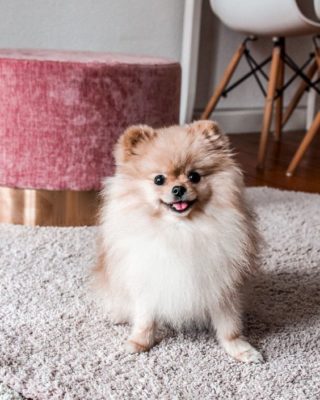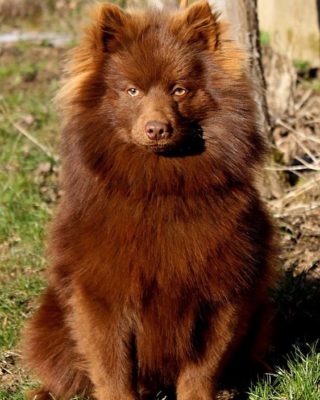German Spitz

The German Spitz has character traits such as loyalty, empathy, courage, and intelligence. It is a perfect human companion, always sensitive to its mood and ready to spend all its time near its owner. Even despite its small size, the German Spitz is always prepared to protect its territory and the people it cares about.
Table of Contents
Breed Information
| Another Name | Deutscher Spitz |
| Origin | Germany |
| Height | Large – 45 ± 5 cm Medium – 35 ± 5 cm Small – 27 ± 3 cm |
| Weight | Depends on the subgroup |
| Fur | Lush |
| Color | Black, brown, zoned gray, white, orange, cream, and others |
| Lifespan | 13-14 years |
| FCI Classification | Spitz and primitive types |
| Group | Watchdogs |
| Price | $400-600 |
Breed Photos
Origin History
The German Spitz is one of the most ancient breeds in Europe. Their remains date back to the 8th century BC. The first remains of dogs were found in Sweden.
Scientists believe that German Spitzes lived together with humans and were used for different purposes. Originally they were faithful companions and protectors of households.
Later, due to their cute appearance, they became the favorites of the aristocracy and nobility. They were kept by many famous historical people, emperors, and artists. It is known that Michelangelo, Catherine II, Mozart, Emile Zola were fans of German Spitz.
German Spitz dogs became especially popular during the reign of Queen Victoria. Then work on purebred dog breeding, and active selection began. Clubs of fans of these dogs all over the world started to appear.
Nowadays German Spitz has several subgroups: Wolfspitz, Large Spitz (Gross Spitz), Medium Spitz (Mittelspitz), Small Spitz, Miniature Spitz. Each of them has its characteristic qualities and appearance.
Appearance
The large Spitz can range from 43 to 55 cm, usually has a white, black, or brown coat color. The Medium Spitz grows from 30 to 40 cm and has white, black, brown, orange, and other colors. The Small Spitz is 24 to 30 cm tall and has the same coat colors as the Medium Spitz. The Miniature Spitz (Zwergspitz) can be from 18 to 24 centimeters tall.
Whitecoat color is not as popular, because white German spitzes are much more expensive than others. The weight of the dogs corresponds to their height. The body has a square format. The head is of medium size; the nose lobe is black.
The eyes are slightly oblong, slanted, and the iris is always dark in color. The ears are erect, pointed at the ends, set high. The scruff is formed on the neck. The German Spitz’s tail is fluffy, ending in a double ring. The hair consists of a dense undercoat and dense coat.
Character
The German Spitz has character traits such as loyalty, empathy, courage, and intelligence. It is a perfect human companion, always sensitive to its mood and ready to spend all its time near its owner. Even despite its small size, the German Spitz is always prepared to protect its territory and the people it cares about.
German Spitz is not afraid of big dogs; he always rushes into action if he feels danger. He has a loud bark, with which he warns the owner of the danger. But with proper training, he can easily be weaned from barking for no reason.
The German Spitz likes to spend a lot of time outdoors and playing. Therefore, you should take care that he always has this opportunity. Otherwise, he may start damaging the house and damaging the furniture.
The pet does not like to spend a lot of time alone. Then he becomes bored and jealous. Because of its mad love for its owner, it always needs to be around.
Care
The German Spitz’s claws do not sharpen by themselves; therefore, once a week, they need to be gently trimmed and cared not to strike a nerve. Haircare consists of brushing it several times a week and checking for the presence of tangles. If they form, it is enough to trim them with scissors. But during the molting period, you need to comb the coat every day.
Spitzes are neat by nature – they will never get dirty on purpose and walk in a swamp. Bathing is worthwhile about three times a year or as needed.
It can easily live in an apartment, but you can’t lock it in a room by itself because the Spitz can start barking loudly. If there are children in the house, you need to teach them proper behavior with the pet: do not pull its hair and tail, do not put it on your lap, because if the pet jumps, it can be injured.
Training
From an early age, it is important to devote a lot of time to training the pet. It is necessary to wean them from negative traits: jealousy, leadership position, demands attention. It is essential to show the Spitz right away that you are the master in the house, not him.
It is vital to combine exercise and play during training because they are by nature very playful dogs. It would help if you were persistent and patient; you should not shout or raise your voice. It can be taken aggressively.
They are smart enough and have an excellent memory to remember commands easily and follow them. If the German Spitz sees your authority, they will always try to please. They have no problem with obedience.
Common Diseases
Dogs of this breed have good health and strong immunity. However, it is common for them to have these diseases:
- alopecia X (hair loss);
- dislocation of the kneecap;
- cough;
- retinal atrophy and dysplasia;
- epilepsy.
Nutrition
You can feed either natural food or food. It is most convenient to provide ready-made food, as it contains all the useful elements. But if you feed natural food, 30% of the diet should be lean meat (veal, chicken, turkey). Also in the diet should be porridges (rice, buckwheat), fruits and vegetables.
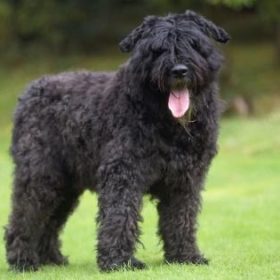 Bouvier des Flandres
Bouvier des Flandres Dalmatian
Dalmatian German Pinscher
German Pinscher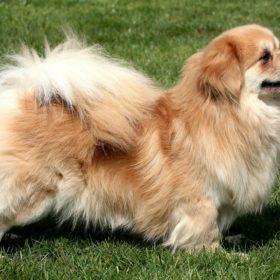 Tibetan Spaniel
Tibetan Spaniel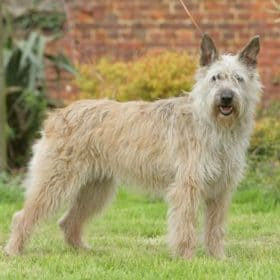 Bouvier des Ardennes
Bouvier des Ardennes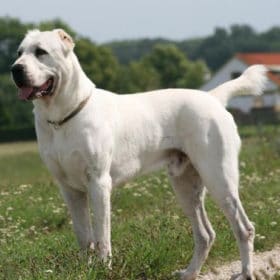 Central Asian Shepherd Dog
Central Asian Shepherd Dog